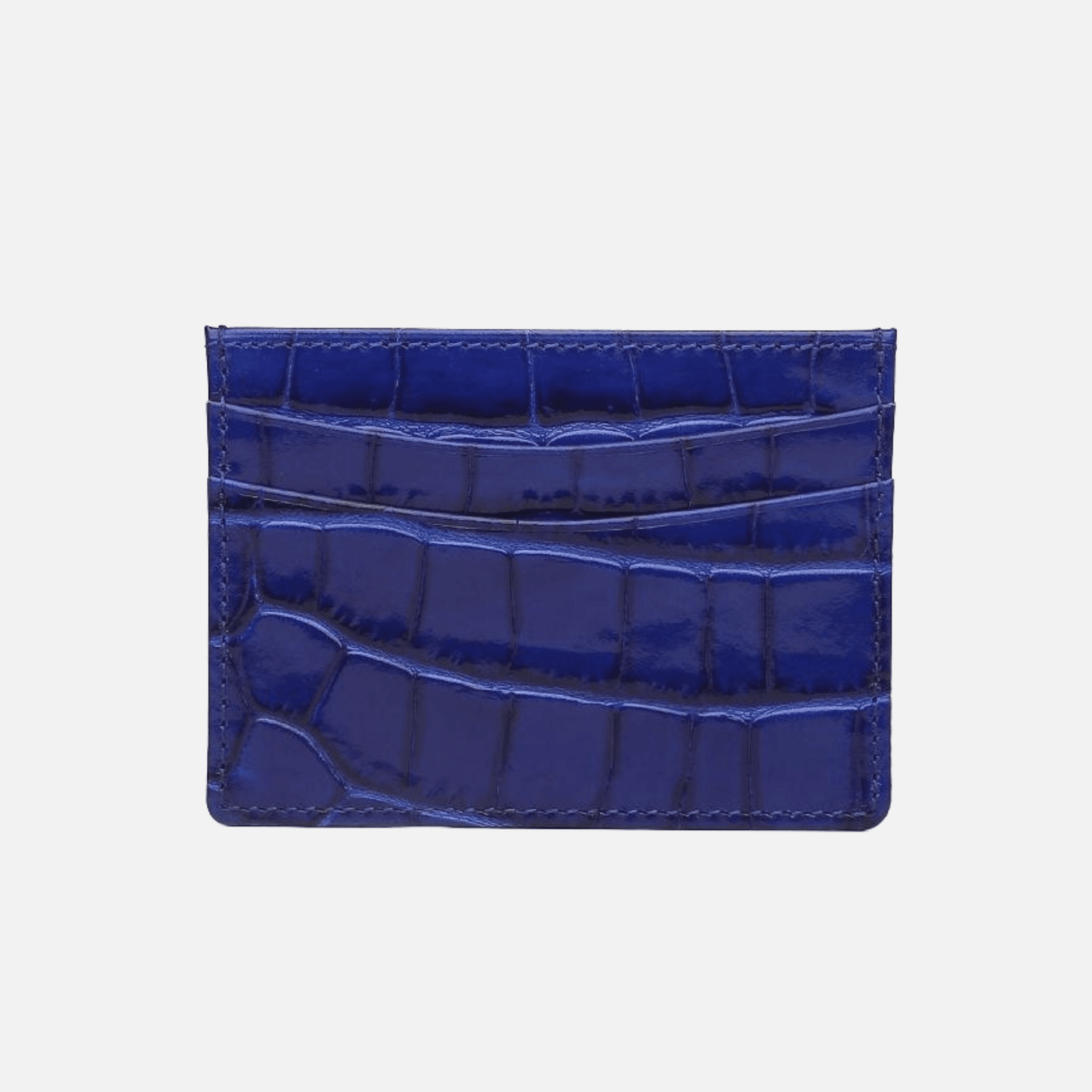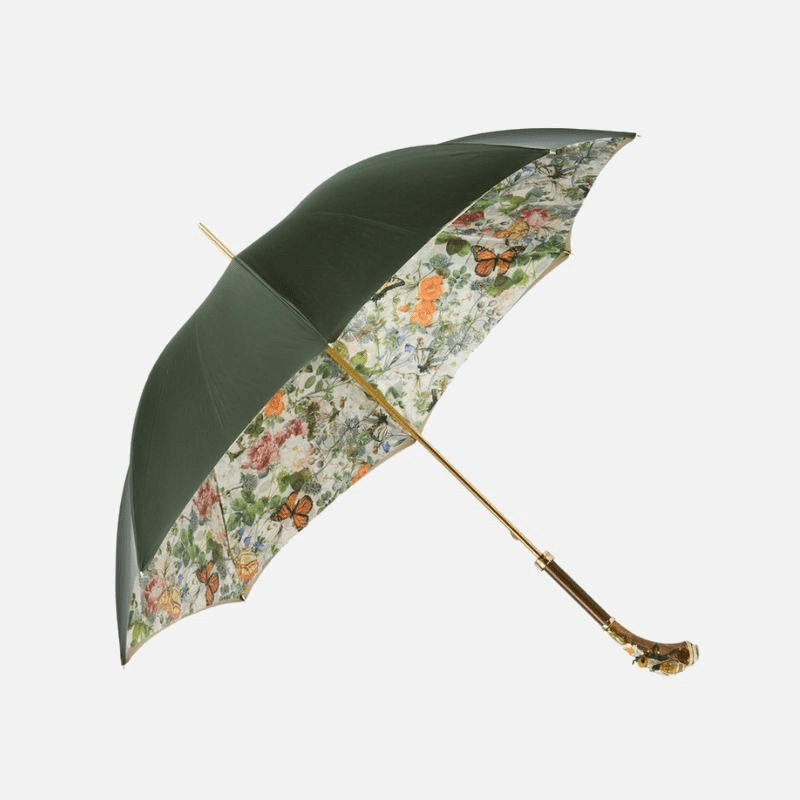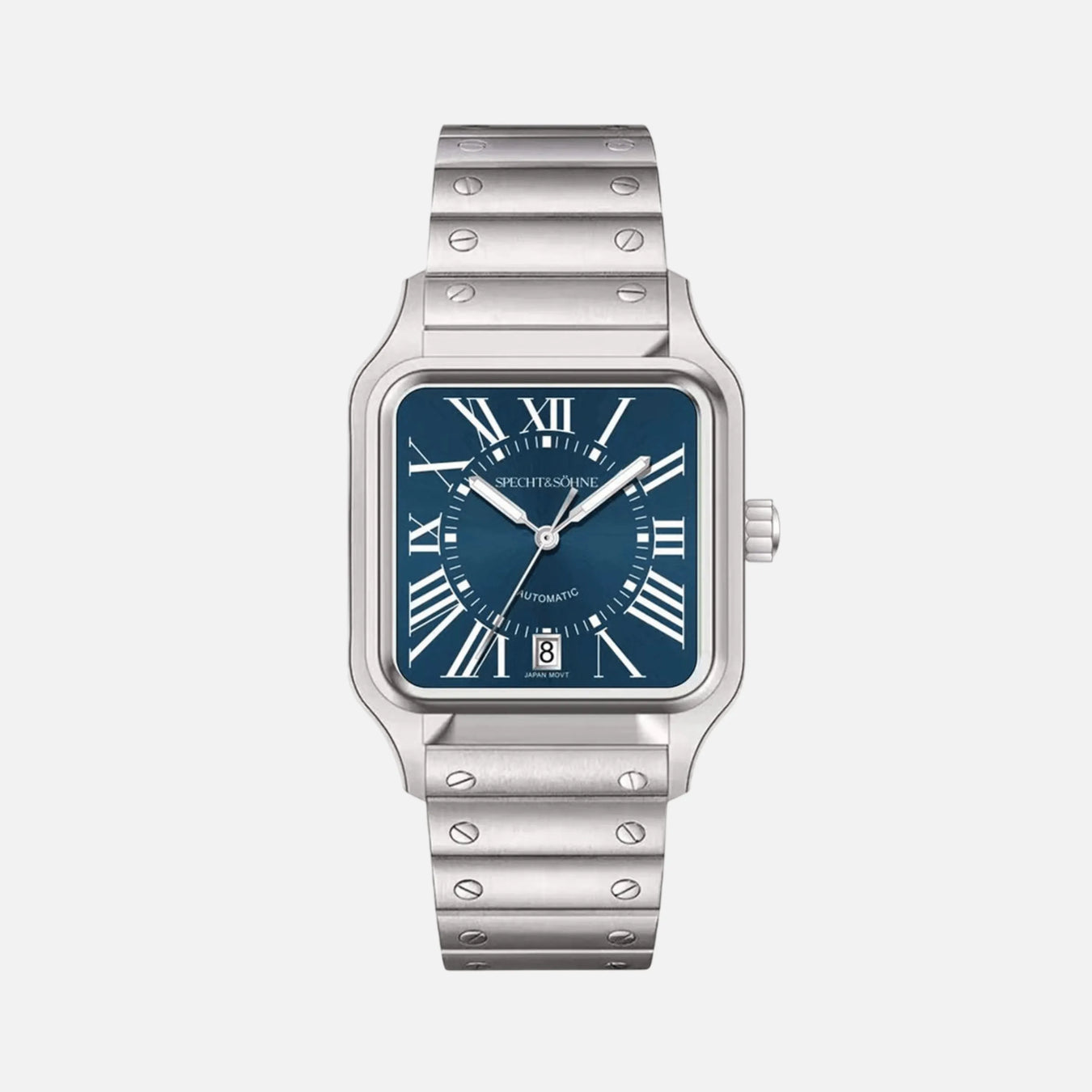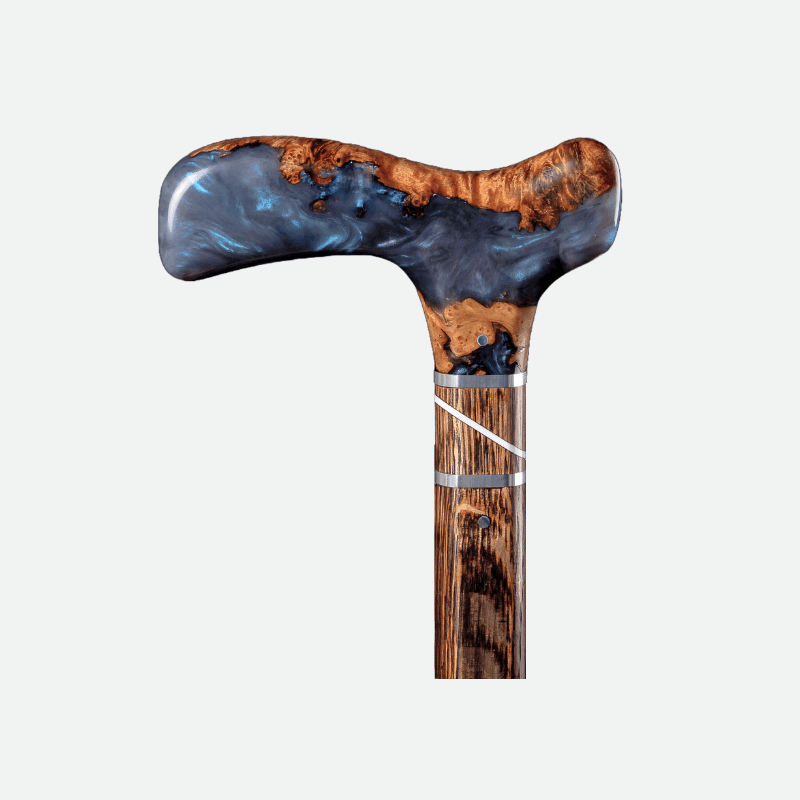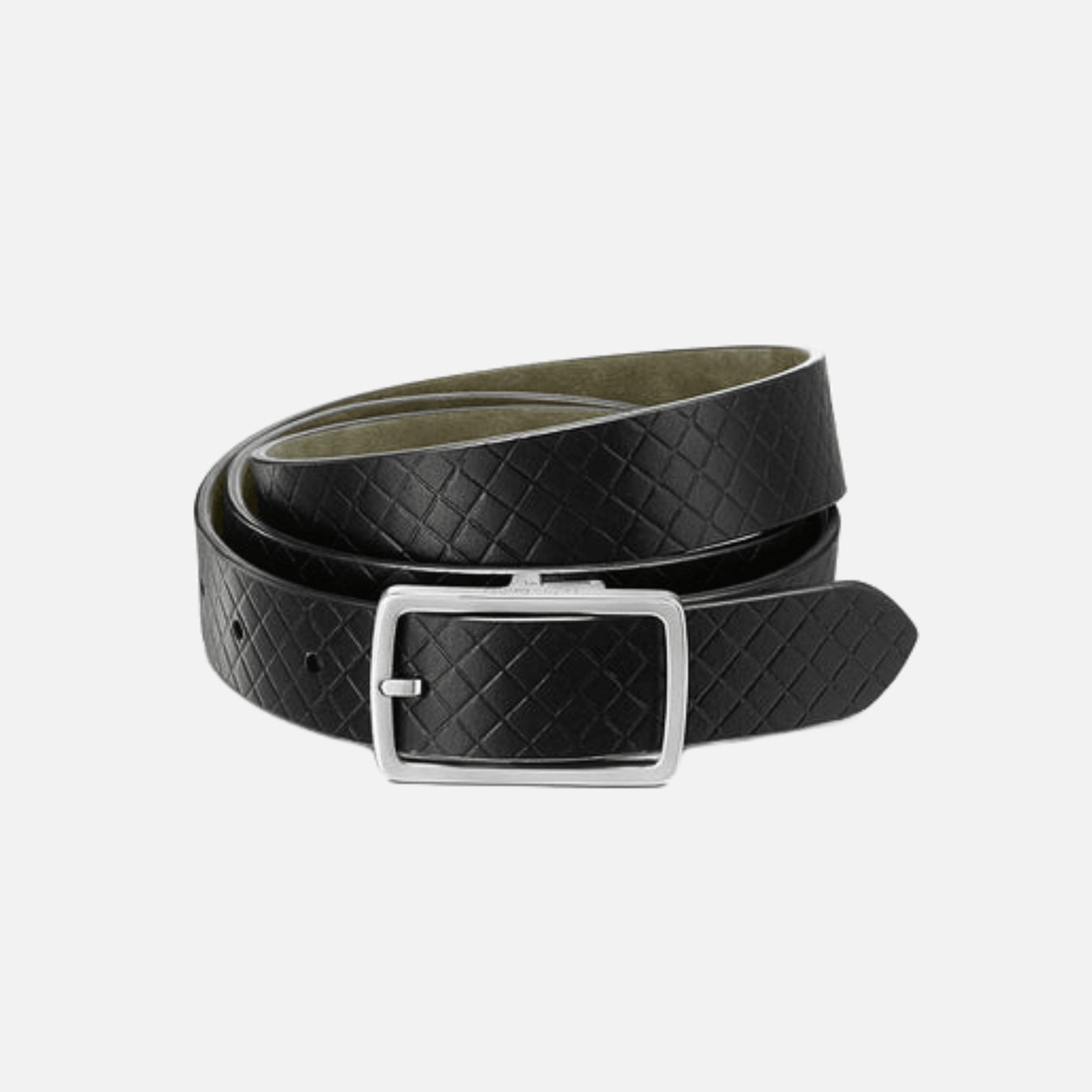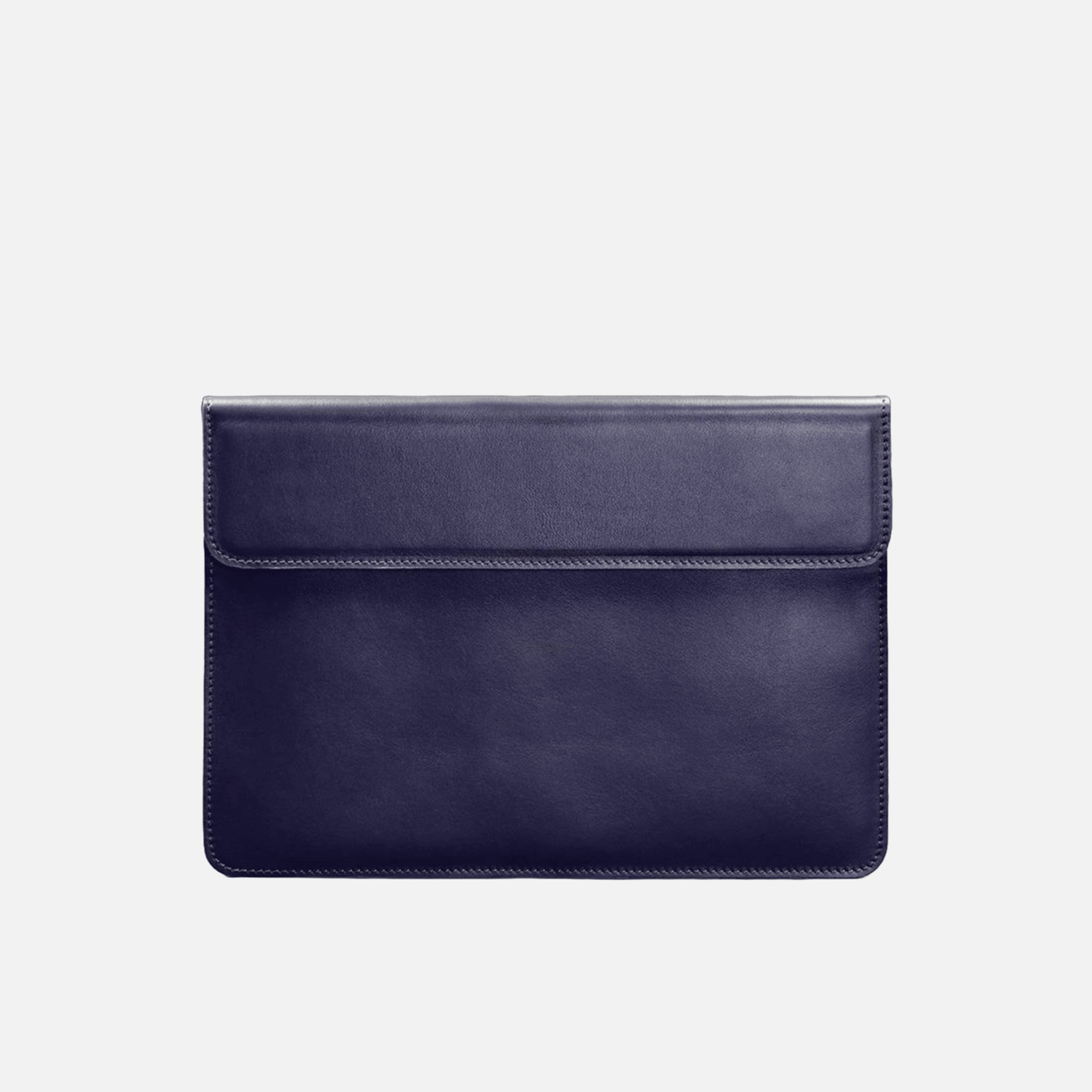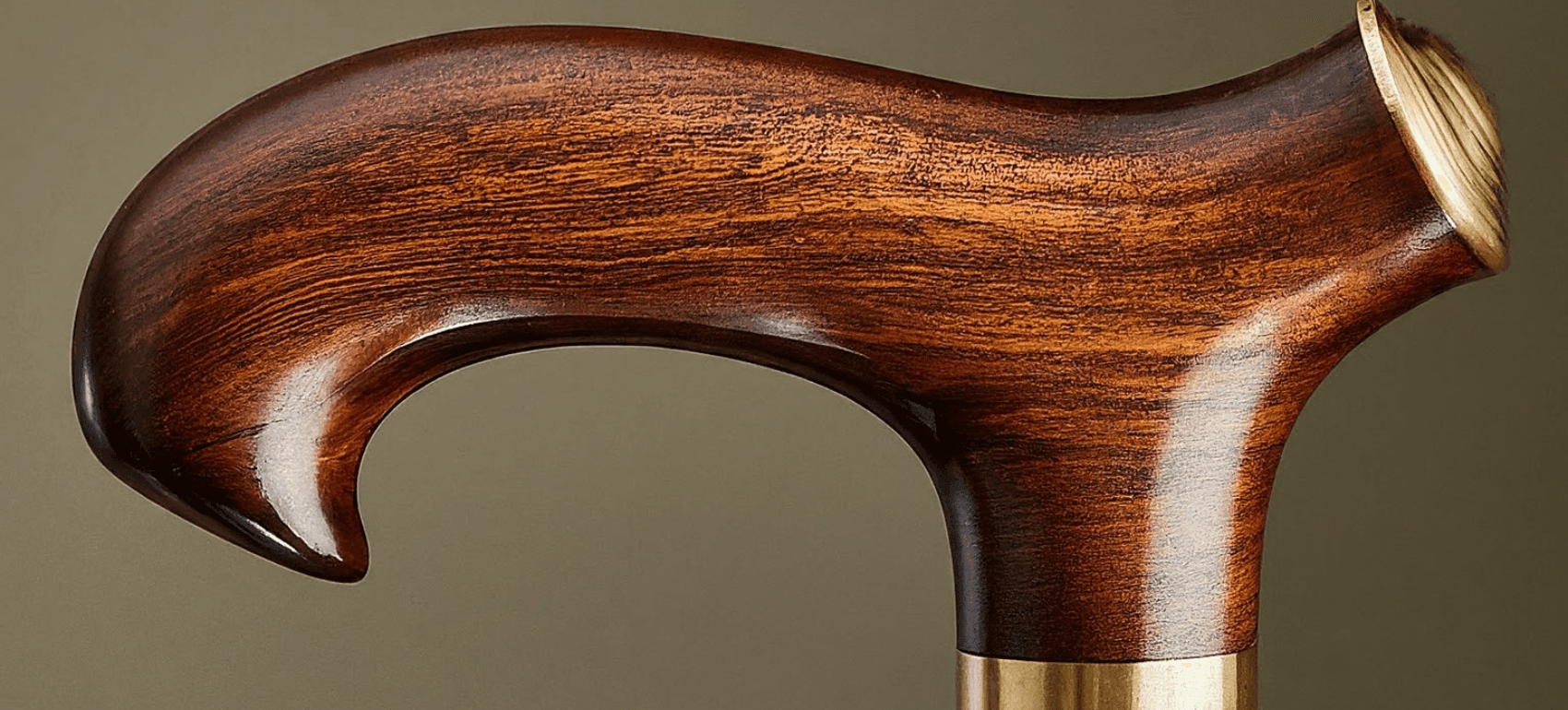
Carved with Care: How Heirloom-Quality Walking Sticks Are Made for You
Introduction to Heirloom-Quality Walking Sticks
In the realm of craftsmanship where tradition and innovation intertwine, heirloom-quality walking sticks stand as a testament to the art of the handmade. These practical accessories extend beyond mere function, evolving into luxurious companions refined through skilled artisanal techniques. Delving into the world of made-to-order walking sticks offers an insight into a meticulous process, wherein each piece is crafted with the individual in mind—a fusion of classic elegance and the latest contemporary trends in luxury walking cane design and aesthetics.
At the core of these bespoke creations is a commitment to quality, a principle that drives artisans to carefully select materials and dedicate hours to perfect craftsmanship. Our artisans work from an extensive list, ensuring that every aspect of the walking stick—from the sturdiest shafts to the most intricate carvings—is tailored to each client’s needs and preferences.
Behind the scenes, these luxury umbrellas of the land stand as monumental efforts, embodying the traditions of woodworking and the personal touch of the maker. The about us narrative isn’t merely a webpage section; it embodies the story and dedication involved in bringing these heirloom pieces to life. Each walking stick is not just a product but a legacy, one that carries the marks of its creator and the promise of longevity. Through the passion-soaked labour of our craftspeople, we invite patrons to explore a world where every step is supported by heritage and every cane is a work of art.
The Origins of Walking Stick Craftsmanship
Walking stick craftsmanship is a form of artistry with a rich history that harks back to the times when walking sticks were used for more than mere support; they symbolized power and social status. Initially, these items were simple, cut from the wood by individuals for personal use. However, as their popularity and symbolic value grew, so did the skill and attention to detail of the artisans crafting them.
The tradition of handmade walking sticks evolved through the centuries, with different cultures adding their unique touches and symbolic features. In Europe, for example, walking sticks became much more elaborate during the Renaissance, with skilled craftsmen incorporating precious metals and jewels into their designs, a trend that continues in some luxury walking cane designs today.
Artisans have maintained a commitment to quality and craftsmanship. This commitment is evident in the heirloom-quality walking sticks made to order for those who appreciate the legacy of artisanal techniques. The process behind the scenes is meticulous, often combining classic styles with contemporary trends in luxury walking cane design and aesthetics.
Despite the rise of industrial manufacturing, a dedicated artisans list persists in creating these bespoke items that blend function with fashion. The handmade aspect ensures that each piece is unique, with its own character and story, resonating with those who value the notion of “made for you”.
From carving intricate patterns to selecting the finest woods, walking stick craftsmen bring a personal touch that machines cannot replicate. Crafting luxury umbrellas often involve similar techniques, reflecting a shared heritage of bespoke accessory crafting. Clients seeking items that embody both utility and sophistication find solace in the hands of such devoted artisans, where the knowledge and history of walking stick craftsmanship continue to thrive.
Selecting the Perfect Wood: Materials Matter
When considering an heirloom-quality walking stick, the selection of the perfect wood is a pivotal decision that resonates with the devotion of artisans to handcrafting timeless pieces. Understanding that materials significantly impact the durability, aesthetics, and comfort of luxury walking canes, craftsmen meticulously assess the qualities of various woods.
Hardwoods are often the material of choice for their renowned sturdiness and rich textures. Common selections include oak, known for its resilience and pronounced grain; cherry, offering subtle red hues and fine grain; and walnut, prized for its deep color and robust nature. Each type of wood not only confers a specific feel and weight to the walking stick but also aligns with different style preferences from classic to contemporary trends in luxury walking cane design and aesthetics.
Exotic woods can elevate a walking stick to an opulent accessory. Woods like purpleheart, with its striking coloration, or cocobolo, with its intricate patterns, transform an ordinary walking cane into a statement piece, reflecting the individuality of the owner.
The commitment to quality extends beyond simple aesthetics. Behind the scenes crafting luxury umbrellas and walking sticks with artisanal techniques, creators in this trade ensure that the wood’s integrity can withstand daily use while maintaining its charm over generations. Each handmade, made-to-order item is a testament to the artisan’s list of priorities: sustainability, quality, and functionality.
In the ‘about us’ narrative, it is clear that passion for craftsmanship drives the choice of materials. The selection process for the perfect wood is as much an art as the physical act of carving, requiring insight and a profound understanding of the medium to deliver a product that marries luxury with a lifetime of service.
Traditional Carving Techniques vs Modern Innovations
In crafting heirloom-quality walking sticks, a duality exists between time-honored methods and cutting-edge technologies. Artisans list traditional carving as a hallmark of their craftmanship. These manual techniques, refined over centuries, entail using chisels, gouges, and knives to intricately shape wood into elegant forms—each swirl and taper borne of steady hands and unwavering patience. This approach not only reflects about us as purveyors of classic luxury but also embodies the care we invest in handmade pieces that respect historical practices.
Modern innovations, on the other hand, present an expanded realm of possibilities. Laser cutters and CNC routers, with their computerized precision, enable artisans to create designs that veer from classic to contemporary trends in luxury walking cane design and aesthetics. Rapid prototyping and 3D printing facilitate made-to-order creations, ensuring each walking stick aligns perfectly with the client’s desires, down to the minutest detail.
While traditionalists might scoff at machine assistance, savvy craftsmen recognize the potential of modern tools to enhance their artistry. Behind the scenes crafting luxury umbrellas with artisanal techniques is no less valued, but incorporating modern technology can streamline production without sacrificing quality.
-
Traditional Carving:
- Emphasizes manual skill and historical authenticity.
- Produces unique, one-of-a-kind pieces.
-
Modern Innovations:
- Offers precision and the ability to replicate complex designs.
- Facilitates customization and quickly adapts to new trends.
Both schools of thought coalesce in the production of luxury walking sticks: traditional carving grounds our work in heritage, while modern innovations push the boundaries of what can be achieved, ensuring our clientele experience the perfect union of past and future.
The Art of Handle Design: Comfort Meets Elegance
When creating heirloom-quality walking sticks, handle design stands at the crossroads where function fuses with artistry. The artisans on our esteemed list approach each walking stick as a unique project, tailoring it to the individual’s needs while never compromising on elegance. Embracing both handmade traditions and made-to-order precision, these craftsmen understand the critical balance between comfort and aesthetic appeal.
Balance is pivotal in handle design; it ensures that the stick feels like a natural extension of the user’s hand. Artisans analyze every curve and contour, often iterating their designs to achieve an ergonomic grip that distributes weight evenly, reducing fatigue and providing stable support. This attention to detail is not purely about functionality. As curators of style from classic to contemporary trends in luxury walking cane design, mastery over materials and ornamentation is just as vital.
The handle is the crowning jewel of the walking stick. Artisans often use exotic woods, intricate carvings, and even inlaid precious metals or stones to exude luxury. By peering behind the scenes and crafting each component with artisanal techniques, these artificers transform everyday items into bespoke fashion statements. The result is a confluence of comfort, practicality, and visual splendor.
To cap off the design, artisans incorporate:
- Ergonomic shapes that mold to the hand, lessening the strain on joints.
- Aesthetic materials, such as rare woods and precious metals, for a sleek, polished look.
- Custom engraving options, offering a personal touch for a truly one-of-a-kind piece.
In the end, every walking stick is a testament to the artisan’s dedication, ensuring no aspect of its construction is left to chance. They are objects not just to lean on, but to admire – the epitome of where comfort meets elegance.
Personalization & Customization: Creating a Unique Accessory
When it comes to carving heirloom-quality walking sticks, personalization and customization are at the core of the process. These handmade wonders, meticulously crafted by seasoned artisans, ensure that each piece is not just a support accessory but also a reflection of personal style and taste.
From selecting the type of wood that resonates with an individual’s aesthetic sensibilities to incorporating design elements that capture personal stories or milestones, these walking sticks become personalized treasures. Made to order, each walking cane is a testament to the unique preferences of its future owner.
Material Choice: Clients often begin their journey by choosing the material that appeals to them. Whether it’s the sturdiness of oak, the exotic appeal of ebony, or the lightweight nature of bamboo, the choice of wood sets the foundational character of the walking stick.
Design Tailoring: Reflecting on classic to contemporary trends in luxury walking cane design, artisans work closely with clients to bring their vision to life. Intricate patterns, monograms, or special symbols can be etched into the cane’s handle or shaft, making it a one-of-a-kind masterpiece.
Color & Finish: The personal touch extends to the color and finish of the walking stick. From a natural wood finish that showcases the wood’s inherent beauty to vibrant stains or hand-painted details, customization options are abundant.
Additional Features: For those who require specialized functionality, additional features such as foldability, adjustable heights, and reinforced grip options are available, ensuring that the walking stick is as practical as it is stylish.
Delving behind the scenes crafting luxury umbrellas with artisanal techniques, it is evident that the same dedication to craftsmanship and individuality is applied to walking sticks. The artisans’ list reveals a roster of experts committed to creating not just accessories, but personal emblems that stand the test of time. On the ‘About Us’ page, clients learn how each product narrates a story - their story - carved with utmost care.
Finishing Touches: Stains, Seals, and Polishes
Bringing an heirloom-quality walking stick to its final glory, skilled artisans apply a series of finishing touches that transcend its raw elegance into a luxurious accessory. Just as artists frame their masterpieces aptly, the choreographic application of stains, seals, and polishes enhances both the beauty and the longevity of the handmade walking stick.
Consider the stains that are meticulously selected and applied. Tailored to individual preference, these stains can range from deep, rich tones that highlight the natural grain of the wood, to lighter hues that accent the delicate carvings, ensuring each made-to-order piece aligns precisely with contemporary luxury walking cane aesthetics.
Following the application of the stain, artisans seal the wood, a critical step in preserving its integrity. This sealant acts as a barrier against environmental factors such as moisture and sunlight, which can compromise the wood over time. It is here that the masterful techniques behind the scenes come into play—secrets akin to those found in the meticulous crafting of luxury umbrellas.
Lastly, a careful polish brings out the walking stick’s inherent luster and adds a tactile smoothness that’s expected from a luxury item. This is no perfunctory buffer; it is the culmination of hours of labor, a process entrusted only to artisans whose names find pride of place on any discerning artisans list.
These finishing touches collectively ensure that each walking stick not only serves its practical purpose with grace but also stands as a testament to the tradition of handmade artisanship. Each piece, thus cared for, promises to be not merely a tool but a treasured companion through life’s journey, from classic to contemporary times.
Quality Control: Ensuring Durability and Longevity
In the world of handcrafted heirlooms, quality control is paramount. Our artisans embody a tradition that merges time-honored techniques with contemporary trends, ensuring each walking stick is not merely an accessory but a lasting piece of artistry. Each stage of the making process, from the selection of raw materials to the final touches, undergoes a thorough inspection to confirm adherence to our exacting standards.
When you read ‘about us,’ you will discover our commitment to crafting bespoke walking sticks that stand the test of time. The handmade process begins with the careful selection of durable woods and resilient materials that are both elegant and strong. Our artisans, who are listed for their mastery and skill, routinely check for grains, natural strength, and potential defects in the wood before it is shaped.
Once the core structure takes form, the adornments made to order—often with personalized features—are applied with precision. In the detailing phase, we ensure that each element, whether a hand-carved handle or ornate metalwork, is affixed securely, with attention to both its aesthetic and functional longevity.
Our commitment goes beyond what meets the eye. After the walking stick has been crafted, it faces a rigorous quality assessment to check for any weaknesses that could compromise its durability. This includes:
- Stress testing the cane to ensure it can bear weight and resist bending.
- Inspecting the finish for consistency, smoothness, and ability to withstand the elements.
- Ensuring that all joinery is flawless and will maintain structural integrity over time.
The inspiration drawn from classic to contemporary trends doesn’t merely influence design; it informs our approach to workmanship that ensures every piece can endure as an heirloom.
Behind the scenes, the same artisanal techniques utilized in luxury umbrella craftsmanship are brought to bear in the creation of walking sticks. As materials and design evolve, our quality control measures evolve correspondingly to guarantee the enduring presence of every walking stick from our workshop.
Walking Sticks in Culture and History
Walking sticks, also known as canes, have traversed the timeline of history and culture, metamorphosing from simple tools for aid to emblems of power and status. The tradition of using a walking stick is as old as humanity itself, where the earliest walking sticks, as seen in historical records, served vital functional purposes—support for walking and protection against threats.
As societies evolved, so did the role of the walking stick. In ancient Egypt, canes were symbols of authority and sovereignty, often found in the hands of pharaohs and gods in hieroglyphs. These artifacts were not just functional but also decorative, often adorned with precious materials and intricate carvings. Similarly, in European culture, the stick became intertwined with social status. By the 17th and 18th centuries, walking sticks were a staple among the aristocracy, with elaborate designs signifying one’s position and wealth.
The artisans behind the scenes crafting these luxury items have always been revered for their meticulous attention to detail. From classic to contemporary trends in luxury walking cane design and aesthetics, these handcrafted pieces transcend mere functionality and serve as a form of self-expression. Ranging from the utilitarian to the symbolic, from handmade folk art to the epitome of luxury, the walking stick embodies the zeitgeist of its time.
A visit to any artisans list specializing in walking stick creation reveals a respect for the rich history and the continuous evolution within the craft. The process of carving walking sticks, often made to order, combines traditional techniques with modern innovations, ensuring that each piece is unique and tailored to the individual’s desire.
Various cultural forms celebrate walking sticks, from folklore where they hold magical properties to prominent displays in museums showcasing their artistic and historical significance. The grand tapestry of walking stick history is a testament to their enduring appeal across cultures and epochs. Recognizing this, luxury umbrella brands have even extended their craftsmanship to these venerable accessories, highlighting the sophistication and elegance inherent in these seemingly simple objects.
The Maker’s Mark: Signature of the Craftsperson
In a realm where artisanship converges with practicality, the creation of heirloom-quality walking sticks is both a tribute to tradition and an ode to the individuality of the craftsperson. Every walking stick that is carefully handcrafted and made to order carries with it the distinct signature of its maker—a testament to the dedication and skill that goes into its formation.
A maker’s mark transcends the mere branding of a product; it is a seal of authenticity and the craftsperson’s personal pledge of quality. The artisans who contribute to our esteemed artisans list understand that behind the scenes, their crafting techniques do more than create luxury umbrellas and walking sticks—they weave a story of provenance and artistry.
- From selecting the finest woods to carving intricate designs, each step is deftly performed with precision.
- The joinery, inlaid with the expertise that has been honed over years of experience, showcases a seamless fusion of form and function.
- In aligning with classic to contemporary trends in luxury walking cane design and aesthetics, these craftsmen ensure that the final product is not only constructed for durability but also resonates with the individual style of the user.
The maker’s mark is the invisible thread connecting the craftsperson to the client, ensuring that the ethos of ‘handmade’ and ‘tailor-made’ is palpable in every curve and contour of the walking stick. Such dedication is echoed in the ‘about us’ pages of businesses committed to preserving artisanal traditions, pledging to carry forward the legacy of handmade excellence one walking stick at a time.
Preserving Your Heirloom: Maintenance and Care
To ensure the longevity and beauty of your heirloom-quality walking stick, it is vital to follow maintenance and care guidelines. Handmade from the finest materials, these walking sticks reflect a harmony of classic elegance and contemporary design trends, while their creation utilizes generations-old techniques mastered by experienced artisans. The care you extend to these bespoke items will protect your investment and ensure that they remain a functional, beautiful companion for years to come.
Regular Cleaning: Gently wiping your walking stick with a soft, dry cloth will remove surface dust and preserve the finish. For deeper cleaning, use a slightly damp cloth and a mild cleaner appropriate for the stick’s material, then dry it thoroughly.
Storage: When not in use, store your walking stick in a cool, dry place away from direct sunlight and heat sources to prevent warping or discoloration.
Avoid Excessive Weight: While sturdy, handcrafted walking sticks are not designed for bearing excessive weight. Doing so may compromise their structural integrity.
Humidity and Temperature Changes: Rapid changes in humidity and temperature can be detrimental. It’s essential to gradually acclimate your luxury walking cane to different environments.
Inspections: Periodically inspect your walking stick for signs of wear or damage. Check the grip, shaft, and tip for any loosening or wear that may need attention.
Refinishing: Over time, the finish on your walking stick may show signs of age. Contact the artisans who created it for advice on refinishing or restoration services they offer.
By adhering to these maintenance and care practices, you can ensure that the artisanal craftsmanship that went into your made-to-order heirloom will stand the test of time, reflecting both the traditional art behind the scenes of crafting and the modern flare of luxury walking cane design.
Conclusion: Walking Sticks as Functional Art Pieces
Walking sticks have evolved from mere mobility aids to symbols of sophistication and statements of personal style. The intricate process of crafting such heirloom-quality walking sticks is a testament to the dedication and skill of the artisans involved. These creators, often listed among the crème de la crème of craftsmen, imbue every piece with uniqueness, character, and unparalleled craftsmanship.
The walking sticks of today are no longer just about functionality; they also reflect classic to contemporary trends in luxury walking cane design and aesthetics. Every piece made to order is a harmonious blend of tradition and modernity. As customers peruse the artisans list, they will find a diverse selection of artists who specialize in imbuing each walking stick with a distinct personality, making the accessory an extension of their own.
Collaborating with these artisans offers an exclusive peek behind the scenes, witnessing the crafting of luxury umbrellas and walking sticks using artisanal techniques passed down through generations. The result is not merely a tool but a functional work of art that bears the hallmark of human touch. Each piece undergoes a transformative journey from a raw, unformed material into a timeless, handmade masterpiece.
These walking sticks serve not only as reliable supports but also as decorative elements that can be displayed with pride. Made with meticulous attention to detail, they captivate the admiration of onlookers, embodying a rich heritage of craftsmanship. As tangible pieces of art, each walking stick acquired is not only an investment in personal support but also a contribution to the preservation of artisanal heritage.

